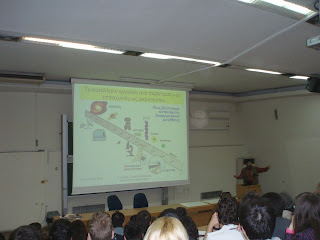A trip to Marseille is not without its complications. First, there’s the mish-mash of streets & buildings which make the term “urban-planning” seem somewhat ambitious. Then there’s the mix of North African, Italian, and French influences that can leave you wondering if you’re still in the same France of wine valleys and opulent châteauxs. Of course all of this confusion is also part of Marseille’s charm – a boisterous, multi-cultural city which quite proudly refuses to be defined.
During our first few trips to France’s second city I felt more than a bit lost – chaotic streets, foreign tongues and a grittiness I hadn’t experienced during our...
outing to all those postcard-perfect Provençal villages.Admittedly, one afternoon spent strolling through the Vieux Port and another tucked comfortably away in a seafood restaurant don’t exactly make for an exhaustive study of the city, so I decided to give Marseille another try.
This past July, we took an overnight trip to the city, and after starting out on our “tourist path”, it became clear that one thing had been glaringly missing from my previous trips: Summer.
Summer, or late spring/early fall for that matter, is a fantastic time to visit Marseille. Under a blanket of bright, Mediterranean sunshine the city transforms itself from bouillabaisse “side-trip” to must-see tourist destination. And nowhere is this more apparent than in the lively, eclectic district of Le Panier.
Made famous throughout France thanks to a television (soap) series, Plus Belle la Vie, Le Panier is the oldest part of Marseille & is bordered by the old docks (La Joliette) to the west, and the Vieux Port (along the quay) to the south. Still gritty, and more than a bit mysterious, the district has magnificent churches, bustling cafes, and affords sweeping views of the Vieux Port and surrounding city.
We spent close to four hours in Le Panier this past summer; setting out from the Vieux Port via “shuttle boat” which conveniently left us in front of Marseille’s Hotel de Ville (town hall). After a few map checks, some stair climbing, and pedestrian stopping (always handy to have a French speaker to ask directions) we found the self-guided tour (follow those red markers) which took us to the heart of the district.
The walk itself lasted just over an hour, but the extra time we spent listening to reggae music & drinking white wine at the outdoor café, Bar des 13 Coins, seemed to lengthen our stay just a bit. And apart from this lazy pit-stop, my fondest memory of this afternoon was photographing the sun-washed side streets, faded buildings, and a few of the district’s diverse residents. As for Marseille itself, I can’t wait for the start of summer… and for our next visit.












